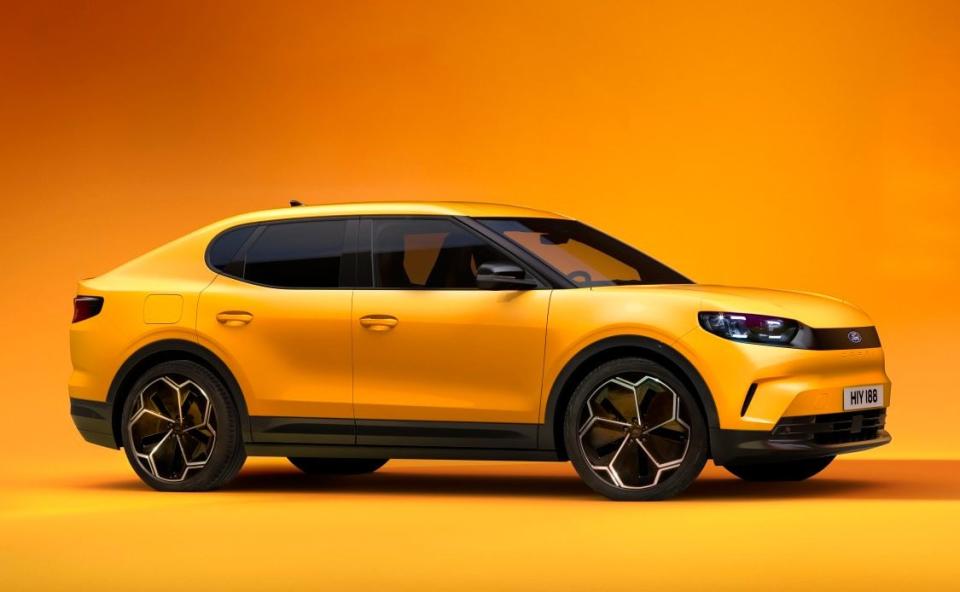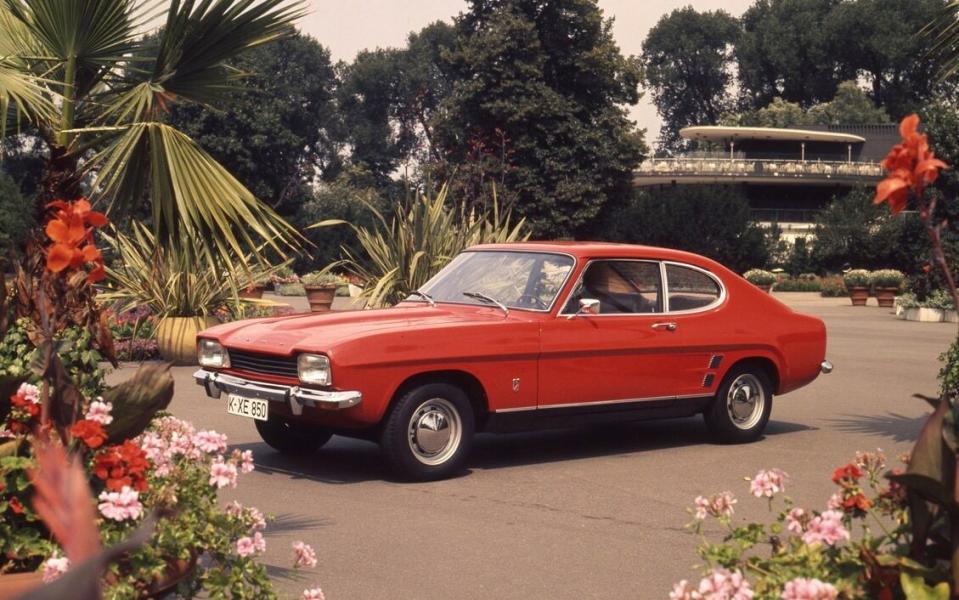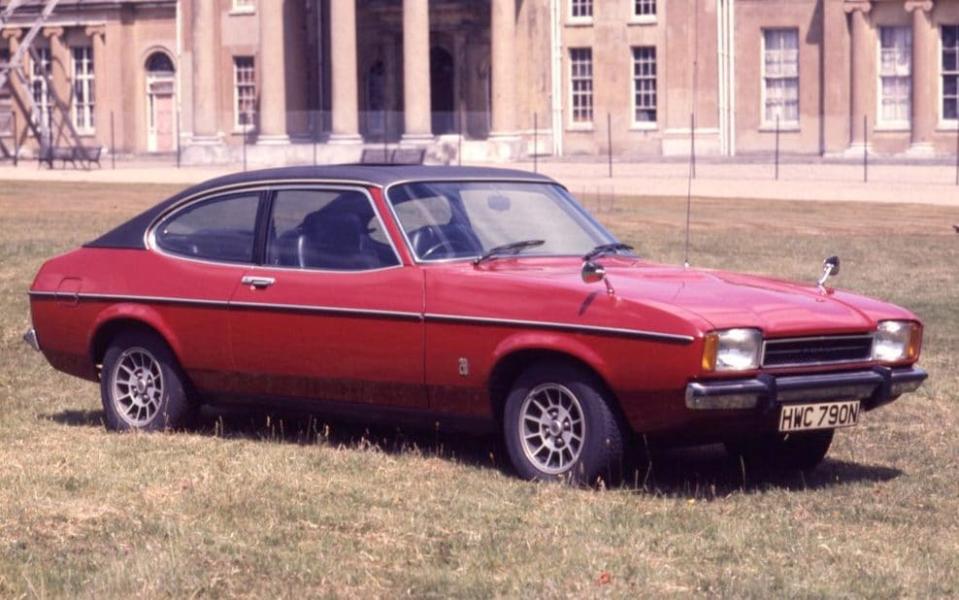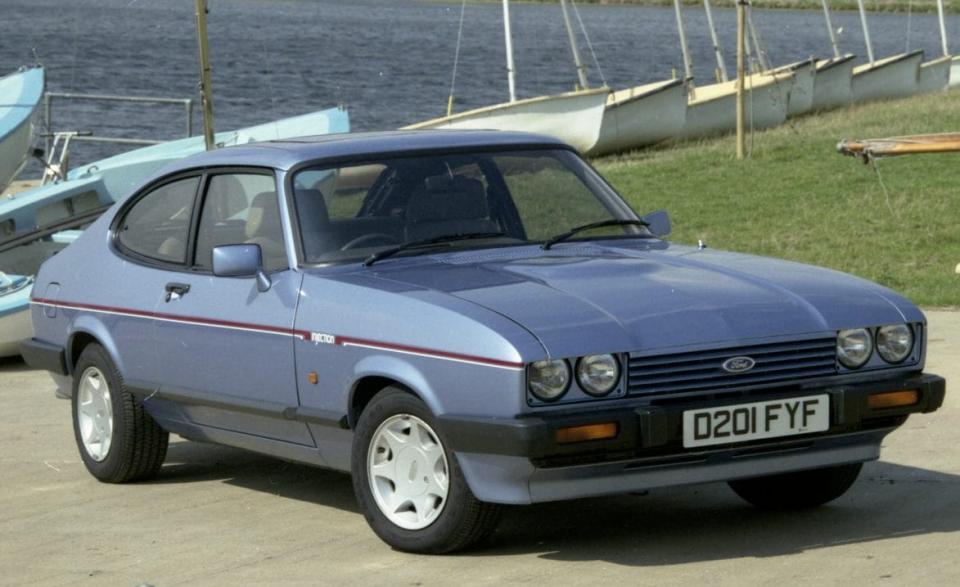Am I the only one who doesn’t get it? “The legend is back,” says the copy, but was the Ford Capri really legendary?
Now that the old name is being revived with the help of Eric Cantona and a video full of pathos, it’s hard to forget the amusing irony felt by Bob Lutz, a senior manager at Ford’s American rival General Motors, when he saw the “retro-futuristic” S197 Mustang in 2004.
“They redid the 1967 fastback Mustang?” he said. “Oh boy, I can’t wait to see what they do next…”
But that redesigned Mustang was a genuine retro job, unlike the 2020 Mustang Mach-E, a battery-electric SUV that bears no credible connection to the original “pony car” beyond a galloping horse badge on the front.
Now Ford is at it again with this reborn Capri, which is nothing more than a curved roof for the Explorer, a battery-electric, four-door, four-seater Volkswagen ID.5 with bodywork that Ford builds under license in Cologne. It’s as sporty as watching football from the sofa and as much to do as the original Capri as a holiday in Torremolinos, which, to be fair, has always been a favourite holiday destination of the public in the heart of Capri.

If you’re under 35, you won’t remember much about the Capri, built between 1969 and 1986. It’ll all be Bodie and Doyle from The professionals as they drive their Capri through cardboard boxes while their boss Gordon Jackson, on garden leave from Upstairs Downstairs, watches. Or Terry McCann of Fewerthe suave ex-boxer who is the scapegoat of the scheming “entrepreneur” Arther Daley, who bought a 2.0-litre Capri Mk2 for McCann but himself drove a Daimler.
Intended to emulate the success of the V8-powered Mustang in the US, the Capri was designed by former aerodynamics apprentice and Chrysler designer Phillip Thomas Clark and was based on a unique floorpan cobbled together from Escort and Corsair parts. A little more than a Cortina in drag, then, but a little less than “The Car You Always Promised Yourself”, as Ford’s marketers would have you believe.
It was Ford’s second use of the name after the small rocky island in the Bay of Naples, Italy, the first being on the 1962 Classic/Capri 116E. Moreover, the second Capri was not actually intended to be called the Capri, but Ford had unsuccessfully fought with Mitsubishi for the rights to the Colt name (Mustang, Colt, geddit?). The name has also been used on the back of a Mazda 323 and a version of the US Mustang, while the 2003 Ford Visos concept car was heavily tipped as a new version of the Capri.
Dubbed ‘every man’s Lamborghini’ by Thames TV Motivation programme, the Capri’s main claim to fame was that it was cheap. In 1969, the base 1.3-litre model cost £890, almost £100 cheaper than the 1.5-litre Austin Maxi family hatchback of that year. Mind you, the Maxi was quicker, faster to 60mph, and rode and handled better.


With its rigid rear axle and leaf springs, the Capri defined tail-happy handling, with many ending their days spinning into the countryside. The 138bhp 3000 GT, with its Essex V6 engine, had a fearsome reputation for being harder to drive in a straight line than through a bend…
Even the last 2.8i Injection models (1981-86) required careful operation and sensitivity with the throttle pedal to avoid going left, with the rigid rear axle retained until the end.
And boy, did they rust. I remember trying to change a wheel on a four-year-old Capri and not being able to find a spot underneath that had the integrity to support the jack. The vinyl upholstery quickly showed its age (often with cigarette burns) and while parts were cheap, you had to buy a lot of them to keep your Capri on the road.
But this was the 1960s. The British people had money in their pockets and young people were being ‘discovered’ as potential sources of profit. The Capri was an attainable bit of flash and its transatlantic looks suited the times.


It was well marketed of course, but the British public were no fools, we all knew what the Capri was and what it stood for. That may explain the handful of famous Capri drivers: boxing promoter Barry Hearn, Brian Connolly of The Sweet, Cliff Richard. There is a story that John Deacon of Queen wanted to buy one, but Freddie Mercury told him it wasn’t rock’n’roll enough.
There’s a retro chic to the old Capri these days, but to own one you have to be into welding. Think Harry Styles’ white Capri, which even he left to rot in a lockup.
And it is sheer revisionist nonsense to suggest that the Capri had no direct competitors. In 1969, when the car was launched, Engine magazine tested the £1,121 9s 6d 1600GT, which it described as “less a 2+2, more a family vehicle with four wheels.”
For a 100mph car it was cheap, but it was also basic. And as always with Ford, you had to spend a lot of money on options to improve the specification. Engine compared it to the £1,034 Triumph Vitesse, the £1,438 Fiat 124 coupe, the £1,198 Lotus Cortina and the £1,405 BMW 160. I’d have taken the Cortina every time…


Browse the 1969 Engine Road Test annually, and alongside the Capri was the delightful Bertone-designed Alfa Romeo 1750 GTV coupe, £2,248 worth of high-speed fun with, according to the testers, “superb” handling. With a sophisticated all-aluminium twin-cam engine and five-speed gearbox, the GTV was one of the most accomplished two-door coupes. Or the spacious £1,592 Vauxhall Commodore coupe, or the refined £1,661 Lancia Fulvia Coupé Rallye, which also debuted in 1969.
The Capri was an instant success, with wealthy young executives adding one to their roster and in just five years Ford had sold over 1.5 million of them – not bad for a niche car. The Mk2 gained a hatchback, a larger interior and more practicality, but by the time of the Mk3 in 1978 the going was already good. Ford’s designers had transformed the image with nothing more than a box with black trim, a set of round headlights and a new bonnet, but the age of the hot hatch had dawned and the Capri seemed of a different era; a little dull.


But as you sow, so shall you reap. Former Ford boss Alan Mulally once said it was a shame to throw away beloved names, and even the company’s rivals have taken notice. Legacy carmakers are taking every opportunity to differentiate themselves from the new wave of Chinese brands. Alfa Romeo is reviving its Junior name, for example, and Opel wants to bring back the Manta badge.
After the Mustang and Capri, it looks like Ford is also turning its attention to the Fiesta. The company’s CEO, Jim Farley, was recently a guest on Hagarty’s podcast and talked about the Fiesta and how they could make a more premium compact car. Funny how the company has been very quiet about reviving the disastrous Edsel name, or for that matter the Probe coupe, about which one Ford executive recounted: “My wife said, ‘Why didn’t you go all the way and call it The Penetrator?’”
But they’ve forgotten one thing. The new Capri will be miles from cheap. The most expensive Explorer costs £55,275 and the top-of-the-range VW ID.5 costs £55,705, so don’t expect the Capri to be far off the £50,000 mark. Not so much the legendary car you’ve always promised yourself, but the car you can’t afford.